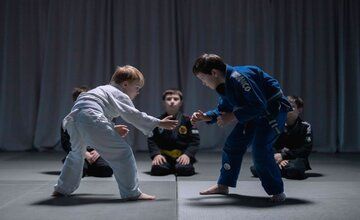One Hundred Per Cent

 Photo credit (above): Allan Ajifo | Flickr
Photo credit (above): Allan Ajifo | Flickr
If I asked you to picture your conventional classroom learning environment, what images would be conjured up? Sleepy students, a teacher droning on, and a humid classroom?
While not all classrooms are like that – I have had great classroom experiences – this stereotype of learning is not exactly over-exaggerated. In fact, it has become, what some of us may consider, a norm.
If these simple statistics were to be measured, it could be charted into a pie chart, and split into 70%, 20%, and 10%.
Zooming in, a typical learning model usually consists of a structure with 70% of the teaching translated through classroom training, 20% through networking, role models, and mentors, and 10% through life experiences.
On another note, research has shown that humans retain information better after practising their information in a practical context (i.e. conducting a classroom programme on how to swim versus real pool practice on how to swim).
Thus, looking at both the above facts together, it is obvious that there is a mismatch between the best way of imparting knowledge, and the execution of the actual impartation.
Here at Leaderonomics, we have changed things up and flipped the typical learning model over, having 70% of the teaching based on life experiences, 20% through networking, and 10% through classroom learning.
Based on that, here are a few methods of which we can use to learn beyond a world of classroom-based learning to experiential learning.
1 Apply for internships
Start by looking through companies that you’re interested in – they can carry the same values as you do, hold positions that you’re interested in, or have a fun workplace culture that you want to be a part of.
This is one of the best ways to get up close and personal to gain knowledge of various industry sectors!
2 Volunteer for community work
Also known as service learning, you can do this by applying something that you have skills or expertise into making a positive change to your community.
This is usually linked through established organisations. Sometimes, you don’t even need specific skill sets to help out.
3 Travel
Though a little on the pricier side, this is a great way to take a dip in a different culture pool. As compared to reading about or watching programmes that portray various cultures, travelling provides a firsthand experience that cannot replace documented facts or stories.
If you’re a student, you can alternatively go ahead and apply for a student exchange programme.
Looking at this, it is safe to say that sometimes the best leadership development model isn’t developed through endless trainings and classes.
Sometimes, it’s better to throw our people out into the deep end of the pool – maybe with a couple of floaties at first (please don’t let them drown), and soon they might be swimming like a fish.
You can contact Sarah at editor@leaderonomics.com.
Personal




